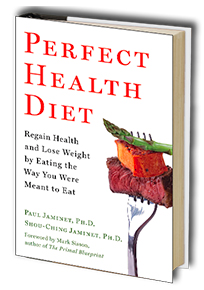
There are two fats that are essential to humans. Alpha linolenic (Omega 3) and linoleic (omega 6) are required in our diet because our bodies can’t make them. Other fats that are "conditionally essential" include, gamma-linolenic acid (an omega-6 fat), lauric acid (a saturated fat), and palmitoleic acid (a monounsaturated fat). Conditionally essential means that most people do not make enough for health. There are other omega fatty acids such as omega 7 and omega 9. They are not required in the diet but do play a role. (To a chemist, the omega followed by a number means that we start counting carbon atoms at the end of the carbon chain and the number is the point that we find the unsaturated spot. The unsaturated spot has what we call a “double bond” between the carbons instead of having hydrogen atoms attached.) Interesting to note, omega 7 break down products create “old person smell”.
Balance omega 3 and omega 6
In essence, the omega 3 and omega 6 play “yin and yang” roles. Omega 6’s are involved in inflammatory reactions in the body and omega 3’s are involved in anti-inflammatory reactions. Both are needed but there needs to be a balance. The current estimate of a proper balance is perhaps 4 parts omega 6 to one part omega 3. Scientists estimate that our prehistoric ancestors ate a diet that was closer to 2 to 1 or even 1 to 1 rather than 4 to 1. Scientists also estimate that most Americans eat a diet that may have as much as 60 times more omega 6 than necessary and not nearly enough omega 3. Most people have a ratio between 15 and 20 to 1.
Consequences from too much omega 6
What is the consequence of so much omega 6? A huge problem is that omega 3 and omega 6 are processed by the same enzymes. That means they are competitive. In effect, excess omega 6 erases the potential benefit of omega 3. We end up with nothing to shut off inflammatory processes. Most disease has an underlying inflammatory component or even cause. This imbalance has been implicated in higher rates of diabetes, cancer, heart disease, stroke, arthritis and skin disorders.
Why so much omega 6?
Commonly used oils such as peanut, sesame, safflower, sunflower, canola, rice bran, and corn oil are heavy in omega 6. Also, most grains have a very high omega 6 content, the most obvious being wheat. Animals that eat grass or algae have fat that contains omega 3. That would mean grass fed herbivores (cattle, deer, etc.) and sea creatures (both algae eaters and the animals that eat them). Olive oil and flax oil are omega 3 heavy. Macadamia and avocado are also good sources. Grape seed oil, coconut oil and clarified grass-fed butter are good oils for high temperatures.
Omega recommendation
Omega 3 consumption is recommended by health organizations around the world. The public confusion seems to lie with omega 6. The clear solution is to avoid omega 6 as much as you can. Omega 6 is in so many food items that you will eat plenty no matter what you do.
--Dave
photo by Dave Hutt, www.dmddigitalphoto.com








 RSS Feed
RSS Feed